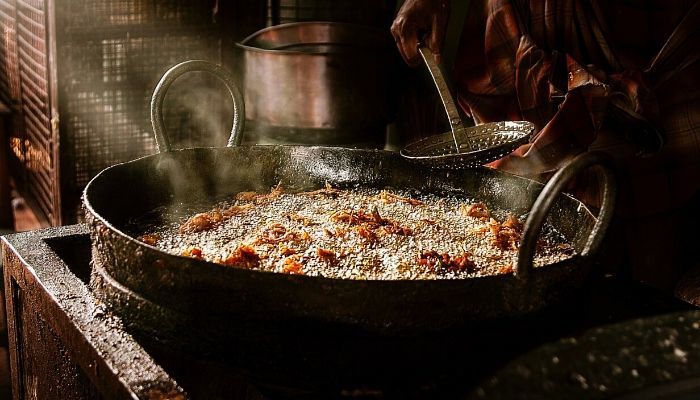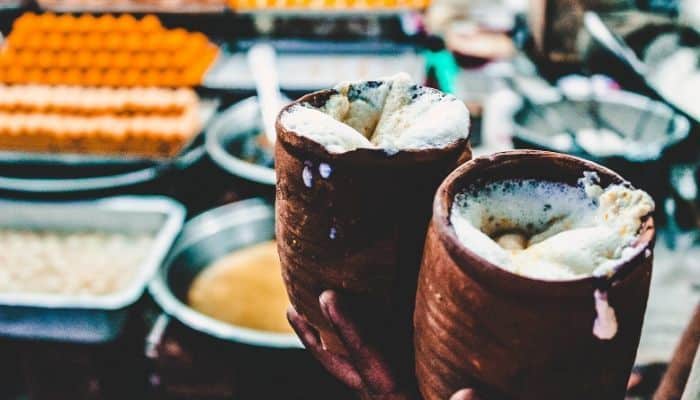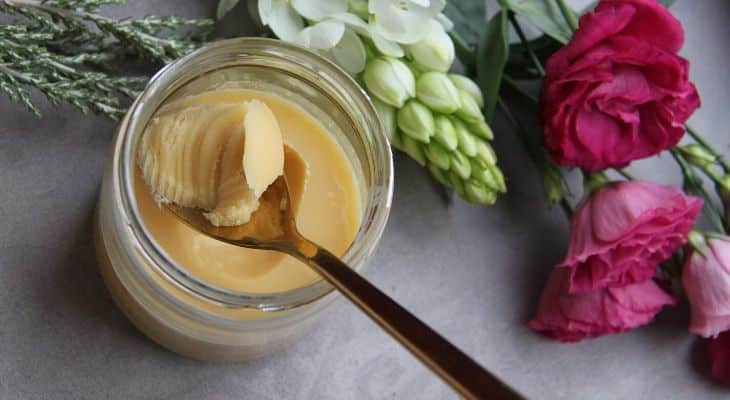Ghee You Say: A User’s Guide to This Alternative Fat
This staple of Indian cooking is becoming increasingly popular in the West. We ask Divya Raghunath of Puresoul Foods for an introduction to ghee.
Q: What exactly is ghee and how is it made?
A: Ghee is pretty much the superfood version of butter. It nourishes and heals the body and can be used the same way you’d use regular butter, butter alternatives or cooking oils. It’s prepared by slow cooking butter until all the moisture evaporates and the milk solids have sunk to the bottom and caramelised. It then goes through a filtering process to ensure all milk solids are removed.
Q: How would you describe its flavour profile?
It has the same rich, buttery taste of butter, but because we brown and caramelise the milk solids, it gives an added almondy texture and taste. With butter substitutes you’re often compromising on taste, whereas ghee provides a taste upgrade.
Q: Can you tell us about the history of ghee and its use in various cooking traditions?
A: Ghee is featured in traditional Indian and Middle Eastern cooking, where the climates weren’t conducive for storing butter, whereas ghee is quite shelf stable. It has a rich status in India, where it has its origins, and according to Hindu mythology is considered to be a food for the gods and incorporated into marriages and other ceremonies. Even now in Indian culture, we often give mashed rice and ghee to kids as their first food.

Q: Ghee seems to suddenly be trending in health conscious circles – why is this?
A: It’s popular with new diets such paleo, keto, FODMAP and Whole30 that encourage the use of healthy natural fats, especially ghee. However, it’s really for anyone who is trying to consume foods that are closer to nature. Part of the trend towards ghee is the shift that’s happened in recent years where people have gone from saying “fat is bad for you” to realising that good fats are essential for our body’s functioning. There have also been a lot of studies showing that saturated fat is not necessarily bad for you, and that it’s trans fats (found in highly processed cooking oils) that are the worst kind of fat.
Q: What are some of the health benefits of ghee?
A: Ghee is lactose and casein free and unlike butter, coconut oil and the like, it’s a very stable cooking fat with a smoke point of 485°F, so it won’t smoke/burn or emit toxins in the cooking process. It’s naturally high in vitamins A, D, E and K, as well as butyric acid, which supports gut health. It’s also a source of short and medium chain triglycerides, which are converted by the liver into ketones to provide energy, rather than being stored in the body as fat.

Q: How can we incorporate ghee into cooking? What dishes does it lend itself to?
A: There’s a perception that ghee is only for Indian dishes, but that’s not true. You can use it as you’d use butter substitutes and cooking oils: spread it on toast, add it to baked foods or use it to deep fry, stir-fry, sauté, roast vegetables or meat or to cook fish. You can even drizzle it on your oatmeal, stir it into your coffee or add a dollop to your veggies to elevate the flavour.
Q: Any tips for choosing a good ghee product?
A: Hands down the best quality ghee comes from New Zealand because its government regulations are strict about grazing cattle on pasture and defining grass-fed. Also, look for 100% pure, no additives and no added preservatives on the label.
Written by Bonnie Bayley
Stay one step ahead of the rest and find emerging and trending products like this and more on the Naturally Good Product Directory.
-
Get your FREE ticket
- REGISTER FOR FREE
